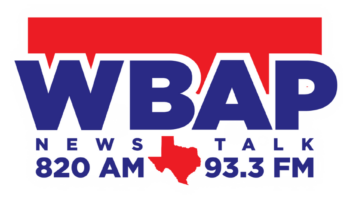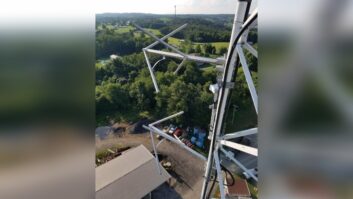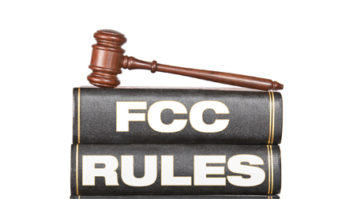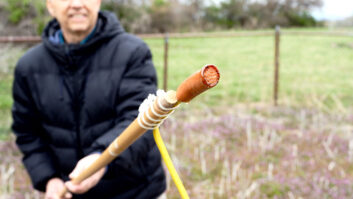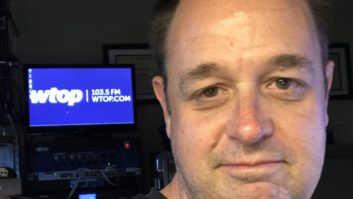
Tim Sawyer
The last 10 days or so have been an exciting and busy one for AM radio, as the Federal Communications Commission received a flood of applications from licensees looking to acquire or move FM translators. Day 1 saw a rush of 406 applications; the pace then fell precipitously, with 11 applications filed on Day 2, and three or four filed each day after for a total of 438at the close of last week.
Radio World kept an ear to the ground and an eye on the influx of applications, and spoke with a number of consultant and engineering firms.
Tim Sawyer, a principal in the Washington firm of T.Z. Sawyer Technical Consultants, shared his observations about the opportunity.
Radio World: What do you expect to see by summer in terms of FM translator window applications?
Sawyer: Perhaps by the time this window closes in July, we will reach the 500 mark. That’s an outstanding number of stations that will be able to better serve their communities as the result of acquiring an FM companion translator.
RW: In drilling down the data, did you find anything surprising?
Sawyer: During the first week, there were some 50 to 60 amendments filed to the pending applications. About half of the amendments corrected basic information, fixed typographic errors or added missing exhibits. In the second half, about 48% of the amendments changed channels in an effort to correct mutual exclusivity (MX) situations.
I even noted a couple that had to amend their applications two or three times before finally settling on an output channel that would result in the application being granted as a singleton.
I also noted a couple of translator applications that clearly had no prior or real future relationship with the proposed primary AM station. They clearly are proposing to serve as a translator to the AM station for the statutory four-year period, then having moved to a more desirable location will have positioned themselves for a possible flip to another facility for greater financial reward at the end of the mandatory period. That’s a pure speculative play. As one person said to me, “Who is to say what the rules will be four years from now?”
Translator transfer of ownership applications averaged 24 applications a month for the first eight months of the year. In September, as rumors began to circulate about the 250-mile eligibility rule, the number of ownership transfers jumped to over 40 applications for that month. The last quarter of the year averaged 47 applications per month. In January of this year, the number had increased to over 200 transfers of ownership applications being filed. A few translators were bought by investment groups and then flipped shortly thereafter to an AM station. One translator construction permit was purchased for $17,000 and resold for $35,000 six months later. It’s supply-and-demand pricing.
RW: Anything else surprising?
Sawyer: As we sorted the data, filtered it and drilled down into it, I noted that some 15 or so engineering firms were responsible for 50% of the applications. That’s a tremendous amount of work being done in a rather short time by a very few individuals.
I also noted that one translator was proposed to be used by two different primary stations, and one primary station was specified by two different translator applicants. So there is still some work to be done to straighten those applications out.
The balance of February will be spent resolving any technical conflicts between the pending applications. I suspect the easy engineering fixes have already been filed as amendments.
The FCC processing staff (engineering and legal) will definitely be busy for the next couple of months sorting this all out. They’ve done a great job so far in answering our questions, and keeping the system running. I also suspect they would want to clear these applications out of the way before the second half of the modification window opens at the end of July.
RW: It’s been said that 400-plus applications is impressive. What do you think this says about the health of the industry?
Sawyer: $22 million to $25 million was probably spent on this first window. That’s roughly 450 stations at an average of $50,000 per facility by the time they build it, including purchasing, legal, engineering and equipment — assuming they all finally get granted. That’s not really that bad. It’s an expense nobody wanted, but one that was necessary, particularly for this group of Class D and C facilities. In some cases the investment is a sizeable percentage of the station’s “stick-value,” and that’s scary in itself.
RW: What does the burst of applications say about the technological improvements that AM radio needs over the long term?
Sawyer: I hope it shows that when given a business opportunity that serves a valid purpose, that AM broadcasters are more than willing to pay for it. An example of a technical advancement that failed to serve any valid purpose was AM stereo. It was a novelty at best. FM companion translators are a good investment in providing nighttime service to Class D daytime-only stations, and improving nighttime service to Class C stations.
RW: Do you think it’s wise for broadcasters considering applying for an FM translator to wait for any gaps in coverage that may appear over the next several months?
Sawyer: No, I do not think it is wise to wait … unless you’ve been told that there are no channels available in your area, then of course you have no choice but to wait. If that’s the only reason why you didn’t already apply, please have your engineer rerun the studies and see if anything moved out that would allow you to move in. I think everything that was being moved to other areas has been moved; of course, there are always a few exceptions. The data is all there. This assumes you have an FM translator ready to use in your application.
If you’re waiting for FM translator prices to drop, you need to look for FM translators holding unbuilt construction permits only. Take a hard look at any that will expire this year, in particular those that will expire prior to August. If they haven’t sold to an AM station as of yet, they run the risk of their permit expiring.
RW: Due to the dearth of spectrum, do you agree with the sentiment that what helps one class of broadcasters might hurt and lessen the chance of others getting more power?
Sawyer: I have strong positive feelings about LPFM broadcasters, just as I do for any noncommercial broadcaster. They serve without compensation, with their only fulfillment being their passion for community service.
For me personally, this whole LPFM/FM translator thing came off the tracks decades ago when the commission denied local origination to FM translators. We did it for TV translators; why not for FM translators? The rules of spectrum allocation were already in place. It would have been a simple process. Now we have the LPFM service asking for more power. If it fits, let them have it. All I ask is that they follow the same protection/interference scheme that FM translators already do.
Of course I’m a bit of a spectrum rebel. I think the whole FM band should be switched to a contour-to-contour, protection-to-interference basis. Part of it already is in the NCE reserved channels. Let us be done with these spacing tables and perfect circles of allocations. I’ve adopted the phrase an “island of service, in a sea of interference” as my mantra. I say it every morning while booting up the computer to start work.
RW: What suggestions do you have for those AM broadcasters in large markets where spectrum is limited?
Sawyer: I’ve heard Internet streaming is working for some, but not being in the car is a drawback yet to be overcome. The other option is piggybacking on a HD3 stream of a full-service FM digital signal.
RW. Suggestions as the industry heads into Week 2 of the window?
Sawyer: If you are in an MX situation with another application, start working on how you want to fix it. Your engineer will guide you on the best solution. However, here are a few typical ways to break an MX situation with another application. One, change channels. Two, change power/height or directional antenna. Three, change site location.
RW: What are the next steps for consulting and engineering firms who are working in this space?
Sawyer: We have internally broken the filing windows down into major/minor segments … [and] we’re ready to move on to the next window. This first window is the modification window, and includes the subcategories “1A” for Class C and D facilities, and “1B” for all other AM stations. We are well into the engineering for a number of facilities that will be filing in the 1B group in August. Most of the critical studies have already been run, and exhibits have been prepared. We just need to plug a few numbers into the applications and we’re ready to go.





